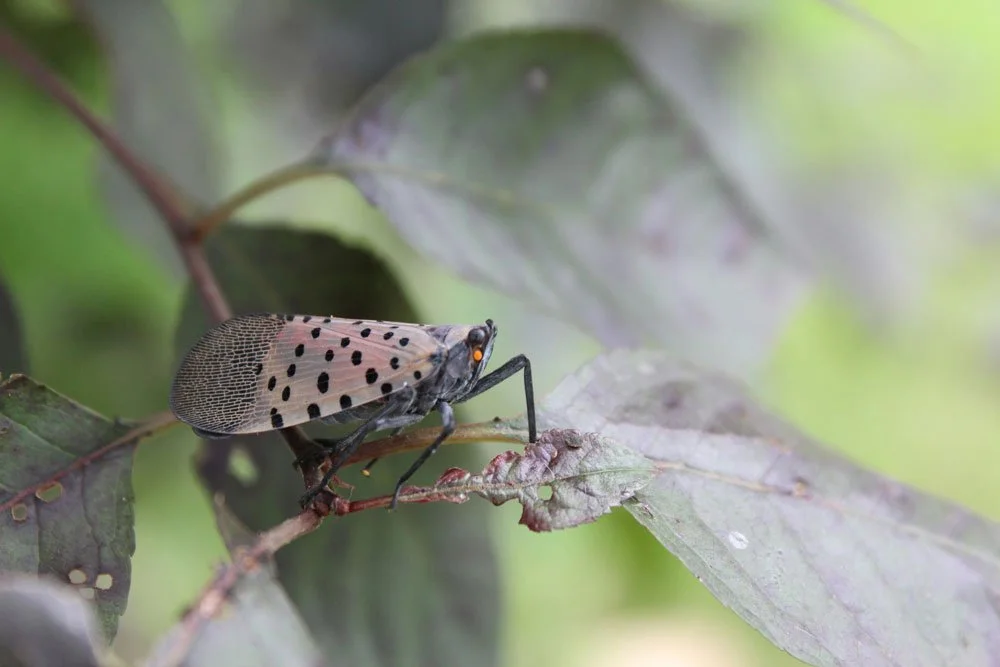Dealing with the Spotted lanternfly
If you’ve been out in the yard lately and noticed a strange bug with spotted wings and a flash of red when it flies, chances are you’ve come across the spotted lanternfly. These pests, originally from Asia, are invasive and they’ve made their way into our area. They feed on the sap of trees and plants, leaving behind a sticky residue that can attract mold and weaken your trees, vines, and shrubs. In other words—they’re bad news for both homeowners and the environment.
So, what can you do about them? Luckily, there are a few remedies, both natural and chemical, that can help keep them in check.
Natural Options
One of the easiest ways to cut down on their numbers is to remove their egg masses. These look like grayish smudges of dried mud stuck to trees, fences, or even patio furniture. Scraping them off into a container of rubbing alcohol or hand sanitizer kills them before they hatch. Another popular method is using sticky bands wrapped around tree trunks to catch the nymphs as they climb. Just remember to cover those sticky bands with mesh or chicken wire so you don’t accidentally trap birds or other wildlife. And of course, if you see a lanternfly hopping around—don’t be shy about stomping it. Every little bit helps.
Chemical Options
For heavier infestations, there are insecticides available that can target lanternflies more directly. These should always be used carefully, following the label instructions, and ideally applied by a professional to avoid harming beneficial insects and nearby plants.
A Note on Prevention
Lanternflies love the invasive “Tree of Heaven.” If you have one on your property, it may be worth using the hack-and-squirt method. This involves making small cuts around the trunk and applying herbicide directly into the wounds. The treatment travels down to the roots, killing the tree. Once the tree has died, it can be safely removed the following spring. The ideal time to perform this treatment is after the female trees have flowered and produced their seeds—which happens around this time of year. If you have a larger property with multiple Trees of Heaven, consider leaving a few male trees in place to use as “trap trees,” which can then be wrapped with sticky bands to help manage lanternfly populations.
Back in 2019—before spotted lanternflies even reached Loudoun County—we put together a YouTube video explaining what they are and how to identify them. While it’s a little outdated on the local side of things, the information about the bug itself is still spot-on. Check it out if you want to see what these pests look like up close.

